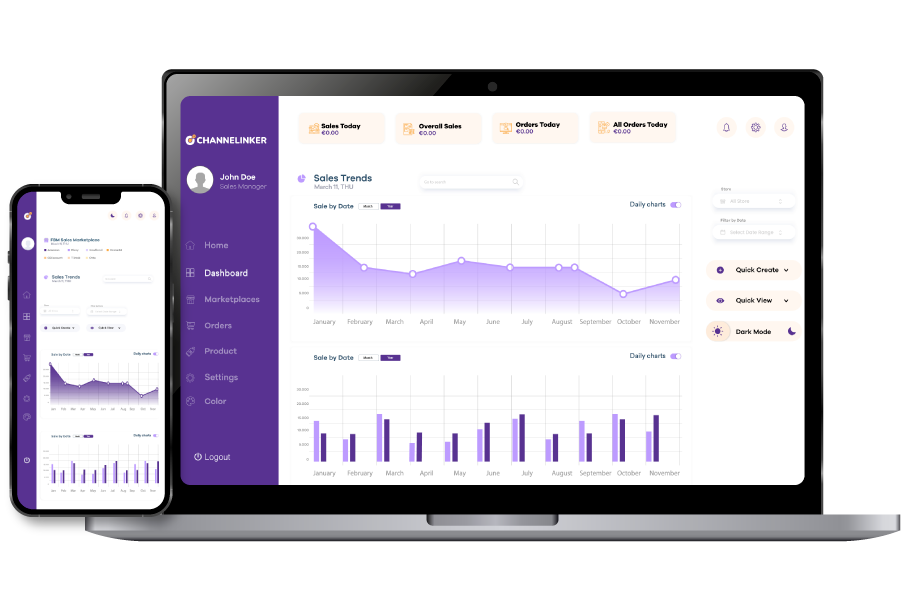Build an Effective Product Taxonomy for Better Online Browsing

What is product taxonomy?
Product taxonomy is the systematic classification and organization of products into a hierarchical structure based on shared characteristics, features, and relationships. It provides a logical framework that helps customers navigate through your product catalog efficiently.
A well-designed product taxonomy resembles a tree-like structure with broader categories at the top that branch out into more specific subcategories and individual products at the bottom. For instance, an online clothing store might organize products into categories like Men’s, Women’s, and Children’s, with subcategories such as Tops, Bottoms, and Accessories, followed by more specific classifications like T-shirts, Dress Shirts, etc.
The fundamental components of product taxonomy include:
- Categories: The broadest groupings of products (e.g., Electronics)
- Subcategories: More specific groupings within categories (e.g., Smartphones)
- Product Types: Specific classifications within subcategories (e.g., Android Phones)
- Attributes: Characteristics that define products (e.g., Brand, Color, Price Range)
Unlike simple product categorization, taxonomy provides a comprehensive classification system that accounts for the relationships between product groups and establishes a consistent navigational structure.
Benefits of product taxonomy
A robust product taxonomy delivers significant advantages for both businesses and customers:
Improved User Experience When customers can easily find what they’re looking for, their shopping experience improves dramatically. An intuitive taxonomy reduces the number of clicks needed to reach desired products, decreasing bounce rates and cart abandonment. Studies show that customers who find products quickly are more likely to complete purchases.
Enhanced Search Functionality A well-structured taxonomy powers your site’s search capabilities by creating logical connections between related products. This enables features like faceted search, where customers can filter products based on specific attributes, and supports accurate search results even when customers use variations of product terms.
Increased Conversion Rates When products are organized logically, customers spend less time searching and more time purchasing. A McKinsey study found that improving the customer journey can increase revenue by 10-15%. Product taxonomy is a fundamental element of that journey.
Better Inventory Management For retailers, taxonomy provides a framework for consistent inventory categorization, making it easier to track stock levels, identify trending categories, and manage seasonal inventory shifts.
Cross-selling and Upselling Opportunities With products properly classified, you can more effectively recommend related items, complementary products, and premium alternatives. This increases average order value and encourages additional purchases.
Scalable Product Management As your product catalog grows, a well-designed taxonomy makes it easier to incorporate new items without disrupting the existing structure. This scalability is essential for expanding businesses.
Data-Driven Decision Making A consistent taxonomy allows for more meaningful analytics. You can track performance by category, identify underperforming product groups, and make strategic decisions based on customer behavior within your taxonomy structure.
Product taxonomy best practices
Creating an effective product taxonomy requires careful planning and ongoing refinement. Follow these best practices to develop a structure that serves both your business and customer needs:
Start with customer research Base your taxonomy on how customers actually search for and conceptualize products, not just on internal organizational logic. Conduct user research through interviews, search query analysis, and card sorting exercises to understand the mental models your customers use.
Keep it simple and intuitive Avoid overly complex hierarchies. Most effective taxonomies limit themselves to 3-4 levels deep. Categories should be immediately recognizable to the average customer. Use common, straightforward language rather than industry jargon or marketing terms.
Maintain consistency Apply the same classification principles across your entire product catalog. Categories at the same level should have similar specificity, and naming conventions should follow consistent patterns. This consistency helps customers build an understanding of how your site is organized.
Use data to guide refinements Regularly analyze search queries, navigation paths, and category performance metrics. If customers frequently search for products using terms not reflected in your taxonomy, consider adjusting your structure to incorporate these terms.
Plan for growth Design your taxonomy with flexibility in mind. As your product range expands, your classification system should accommodate new items without requiring a complete reorganization. Keep category definitions broad enough to include future products.
Balance breadth and depth Too many top-level categories can overwhelm customers, while too few can create unwieldy subcategories. Aim for a balanced structure with 7-10 main categories (following the psychological “chunking” principle) that then divide into more specific subcategories.
Incorporate relevant attributes Beyond the hierarchical structure, identify the product attributes that matter most to customers (e.g., price, size, color, material). These attributes become the basis for filters and faceted navigation, giving customers multiple ways to find products.
Test before implementing Before launching a new taxonomy structure, test it with real users. Tree testing (reverse card sorting) can help evaluate whether customers can successfully find products within your proposed structure.
Product taxonomy FAQ
What is the product taxonomy structure?
Product taxonomy structure typically follows a hierarchical pattern with multiple levels:
- Primary Categories: The broadest classifications (e.g., Furniture)
- Secondary Categories: Major divisions within primary categories (e.g., Living Room Furniture)
- Tertiary Categories: More specific groupings (e.g., Sofas)
- Product Types: Specific product classifications (e.g., Sectional Sofas)
- Product Attributes: Characteristics for filtering (e.g., Material, Color, Price Range)
This structure resembles a tree diagram, with broader concepts at the top branching into increasingly specific classifications. While the number of levels may vary depending on catalog complexity, most effective taxonomies maintain 3-4 levels to avoid excessive navigational depth.
The structure should balance breadth (number of categories at each level) with depth (number of levels) to create an intuitive navigation path that reflects how customers think about and search for products.
Why is product taxonomy important?
Product taxonomy is crucial for several reasons:
- Searchability: It forms the foundation of your site’s search functionality, ensuring customers can find products even when using different terms or navigating without search.
- Scalability: As your product catalog grows, a well-designed taxonomy provides the framework for incorporating new items without disrupting the customer experience.
- Competitive Advantage: In a crowded e-commerce landscape, intuitive navigation can differentiate your store from competitors and create loyal customers who appreciate the ease of finding products.
- Omnichannel Consistency: A strong taxonomy helps maintain consistent product organization across multiple sales channels, from your website to mobile apps and even physical store layouts.
- Business Intelligence: Taxonomy provides the structure needed for meaningful analytics, helping you identify trends, optimize inventory, and make data-driven merchandising decisions.
Without effective taxonomy, even the best products can remain undiscovered in the depths of your catalog, resulting in lost sales opportunities and frustrated customers.
What is an example of product taxonomy?
A sporting goods retailer might implement a taxonomy structured like this:
Level 1: Primary Category
- Sports Equipment
- Apparel
- Footwear
- Accessories
- Outdoor Gear
Level 2: Secondary Category (under Sports Equipment)
- Team Sports
- Individual Sports
- Fitness & Training
- Water Sports
- Winter Sports
Level 3: Tertiary Category (under Team Sports)
- Basketball
- Soccer
- Baseball
- Football
- Volleyball
Level 4: Product Type (under Basketball)
- Basketballs
- Basketball Hoops
- Basketball Shoes
- Basketball Apparel
- Training Equipment
Product Attributes (for Basketballs)
- Size (Official, Youth)
- Material (Leather, Composite)
- Indoor/Outdoor
- Price Range
- Brand
This structure allows customers to navigate either broadly (browsing all basketball equipment) or specifically (searching directly for youth-sized outdoor basketballs), providing multiple pathways to find products based on their shopping preferences and needs.


